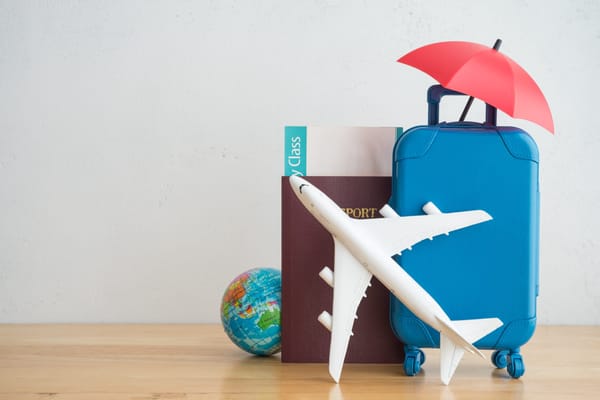Vacation Rental Occupancy Rates: Trends, Tools, and Tips Explored

Occupancy rate is one of the most important metrics to track in the vacation rental market. Along with other key metrics like revenue per available per room (RevPAR) and average length of stay (ALOS), you can gain valuable insights into the overall financial performance of your vacation rental business by tracking occupancy rates.
For those looking to enter the short-term rental market and run their own vacation rentals or hosts wanting to expand their portfolio of Airbnb properties, understanding Airbnb occupancy rates can be equally useful. Just because a property is located in a popular tourist destination doesn’t guarantee a high occupancy rate.
As much of your success rests on your ability to fill up your booking calendar, you’ll want to understand this number before you finalize your final number, whether that’s nightly rates or purchase price.

Defining Occupancy Rate
Basically, the term occupancy rate refers to the ratio of booked nights to the total number of nights that specific vacation rentals are available to be booked. Put differently, it measures the percentage of nights that guests book your vacation rental property during a specific period e.g. a year, quarter, or month. I.e. it’s a good way to gauge how well an Airbnb property is performing.
When looking at occupancy rate, it’s important to distinguish between the rental market’s occupancy rate and that of an individual rental property. These two numbers will not be the same. However, they shouldn’t differ too drastically.
For example, if an Airbnb property’s occupancy rate is much lower than that of its market, it could indicate problems with marketing or pricing strategies. On the other hand, if it’s much higher, it could be because it’s priced too low compared to competing short-term rentals.
Formula for Working Out Your Airbnb’s Occupancy Rate
To work out a property’s occupancy rate, you need to divide the total number of reserved days by the total number of days it was available to be booked and multiply the answer by 100 to express it as a percentage.
For example, let’s say your property was booked for 200 days in 2023. Your local jurisdiction has no nightly limits and you had no desire to use the property yourself. So, you decided to make it available for 365 days.
Here’s how you’ll work out your occupancy rate for the whole year:
(200 ÷ 365) x 100 = 54.79%
This means that for 2023, your occupancy rate was 54.79%.
However, let’s say that you had to block off 10 days on your calendar for maintenance. This means that your property was in actual fact only available to be rented for 355 days. In that case, you’re occupancy rate will be slightly higher:
(200 ÷ 355) x 100 = 56.33%
Now that you know how to work it out, here’s why you need to track it regularly.
Why Are Occupancy Rates Important for Buyers?
The occupancy rate gives you a good idea of the rental demand in a specific area. If you’re looking to buy a property, checking the average Airbnb occupancy rate of the city will help you to identify areas where demand is high.
It will also give you a good idea of seasonality. It’s normal for occupancy rates to differ depending on the season of the year. However, if the occupancy rate for the slow season is significantly lower than the peak season, you’ll have more work cut out for you.
At the end of the day, your rental income potential is directly dependent on the area’s average occupancy rate. If your city doesn’t attract a lot of travelers, there’s only so much that you can do to get your vacation rental property booked.
Plus, if you buy in an area that has a high occupancy rate, it will also be easier to sell your property later and most likely for a higher price too. That said, you don’t have to wait till you sell the property to cash in. In the meantime, it will also be easier for you to increase your nightly rate to meet the demand.
Why Should Hosts and Property Managers Track Their Occupancy Rate?
Any night that your short-term rental property is unoccupied is a potential opportunity to earn money that’s lost forever. In other words, high occupancy rates mean that you’re maximizing your earning potential better.
Tracking your occupancy rate can also help you to set optimal rates for your rental property. If your occupancy rate is much higher than that of similar listings, you can consider increasing your nightly rate. This way, you’ll be able to make the same amount (if not more), but have fewer turnovers.
Essentially, this means that you’ll have less work. It can also translate to fewer expenses.
Each time a new guest checks in, you’ll have to pay your cleaners. Plus, the cleaning supplies alone cost a pretty penny.
On top of the increased cleaning costs, there’s also an increased risk that you’ll suffer property damage. Each day that your property is occupied by a guest, there’s the risk of property damage.
This might sound contradictory. Isn’t the goal to have your property occupied more days than not?
Yes, it is. However, you need to find that sweet balance between occupancy and nightly rate. Basically, you want to charge a realistic maximum for your property and city so that you still attract enough bookings and make enough money to cover the added expenses of extra bookings.

Tools for Tracking Vacation Rental Occupancy Rates
If you specifically want to track the occupancy rate for Airbnb properties, you don’t have to look further than your own Airbnb dashboard. Hosts who’ve opted in to use the platform’s professional hosting tools can access performance data about rates and occupancy under Insights, found below Occupancy and rates.
Here, you’ll find a range of metrics that include:
- The total number of nights blocked for an individual Airbnb listing
- The total number of nights an individual Airbnb listing was booked during a selected time frame
- The total number of unbooked nights during a selected time frame
- The total number of check-ins during a selected time frame
- The percentage of total confirmed reservations canceled by guests
- The average number of nights guests stayed per booking
What’s more, you’ll also be able to compare your own Airbnb listings to similar rentals in the area and maximize occupancy as best you can.
Alternatively, you can use Mashvisor’s Airbnb occupancy rate calculator. It offers real estate investment tools that use Airbnb analytics to determine data like Airbnb occupancy rate, rental income, and cash on cash return. Then, using its heatmap, you can easily identify the largest cities that deliver a good balance between revenue and occupancy rate.
If you list on Vrbo too, you can also use AirDNA’s Rentalizer™ tool. It uses data from millions of Vrbo and Airbnb listings to estimate a property’s earning potential. All you need to do is enter the street address along with the number of bedrooms, bathrooms, and guests the property can accommodate and its calculator will share projections for occupancy rate, average daily rate, and annual revenue.
If you want more than just data at your fingertips, you can, for example, check out iGMS. It offers the best of both — market insights and a host of features to streamline operations. Using its market insights, hosts can:
- Set rates that maximize revenue and occupancy
- Adjust booking strategies to boost occupancy rate
- Predict cleaning needs better
- Adapt to seasonal changes and sudden spikes in demand quickly
What Is a Healthy Occupancy Rate on Airbnb?
To assess whether your occupancy rate is healthy, you’ll need to view it within your real estate market. The occupancy rate can differ significantly across markets. In some cases, a market’s occupancy rate can be more than double than that of another market.
According to AirDNA’s numbers, for the past five years the average Airbnb occupancy rate ranged between 52.9% and 60.3%. In 2023, the average occupancy rate in the United States was 56.7%.
Which US Markets Have a Strong Occupancy Rate?
As mentioned earlier, occupancy rates are region-specific. If you’re looking to buy a property and occupancy rate is one of your most important criteria, Hawaii can be a good choice.
Four destinations in Hawaii made AirDNA’s top 10 list for the highest short-term occupancy rates in 2023. Big Island boasted a rate of 67.8% (more than 11% higher than the national average rate) — and this wasn’t even the highest. Oahu, Kauai, and Maui all had averages in the high 70s, with Maui nearly reaching 80% occupancy.
That being said, AirDNA also warns that Hawaii has strict restrictions. So, even though it’s a favorite destination among travelers, you might not be able to rent out your vacation rental as often as you want.
It can also be more difficult to get started here. For example, hosts in Maui must first apply for a Tax Map Key, register their short-term rental, and apply for a Transient Accommodations Tax number.
Aside from Hawaii, investors can also consider Colorado. The average occupancy rate here is 60.6%. This is a very healthy occupancy rate. However, if you can find a property in Denver or Boulder you can expect closer to 70%. In 2023, Denver’s average was 66.9% while Boulder measured at 67.4%.
Other US states that outperformed 2023’s national average are:
- Maine with 59.3%
- Alaska with 59.8%
- Oregon with 60.1%
- Washington with 60.6%
- Delaware with 66.2%
- South Carolina with 61.7%
- Massachusetts with 61.8%
- District of Columbia with 66%
What Is Considered a Low Occupancy Rate on Airbnb?
Both AirDNA and Mashvisor have created top 10 lists for markets with the lowest occupancy rates in 2023. Cities that have an occupancy rate below 49.7% were classified on Mashvisor’s list as the markets with the worst occupancy rates.
AirDNA’s list was slightly more forgiving. Destinations with an occupancy rate of 43.7% or lower were regarded as the worst performing markets in terms of occupancy.
Based on this data, you can claim that anything below 49.7% is considered a low occupancy rate. After all, if your occupancy rate is less than 50% it means that your property is more often vacant than occupied.

Which US Markets Have the Lowest Occupancy Rates?
Interestingly, AirDNA and Mashvisor couldn’t really agree on which areas have the lowest occupancy rate. Their lists look quite different. The only real agreement is that hosts in Texas struggled in 2023.
AirDNA restricted it to destinations in eastern Texas where the average occupancy rate was 42%. Mashvisor’s borders were slightly broader and identified cities in Southeast Texas too with Houston averaging only 43.8%.
Other US markets that had a bleak 2023 in terms of occupancy are:
- Oxford, Massachusetts with 35.6%
- Atlanta, Georgia also with 35.6%
- Buckhead, Georgia with 36.3%
- Big Bear, California with 39.5%
- Park City, Utah with 41.6%
- Mississippi area with 42.4%
- South Bend, Indianapolis with 42.5%
- Kansas area with 42.9%
- Louisiana area with 43.6%
- Pocono Mountains, Pennsylvania with 43.7%
- Hilton Head Island, Florida with 47.6%






